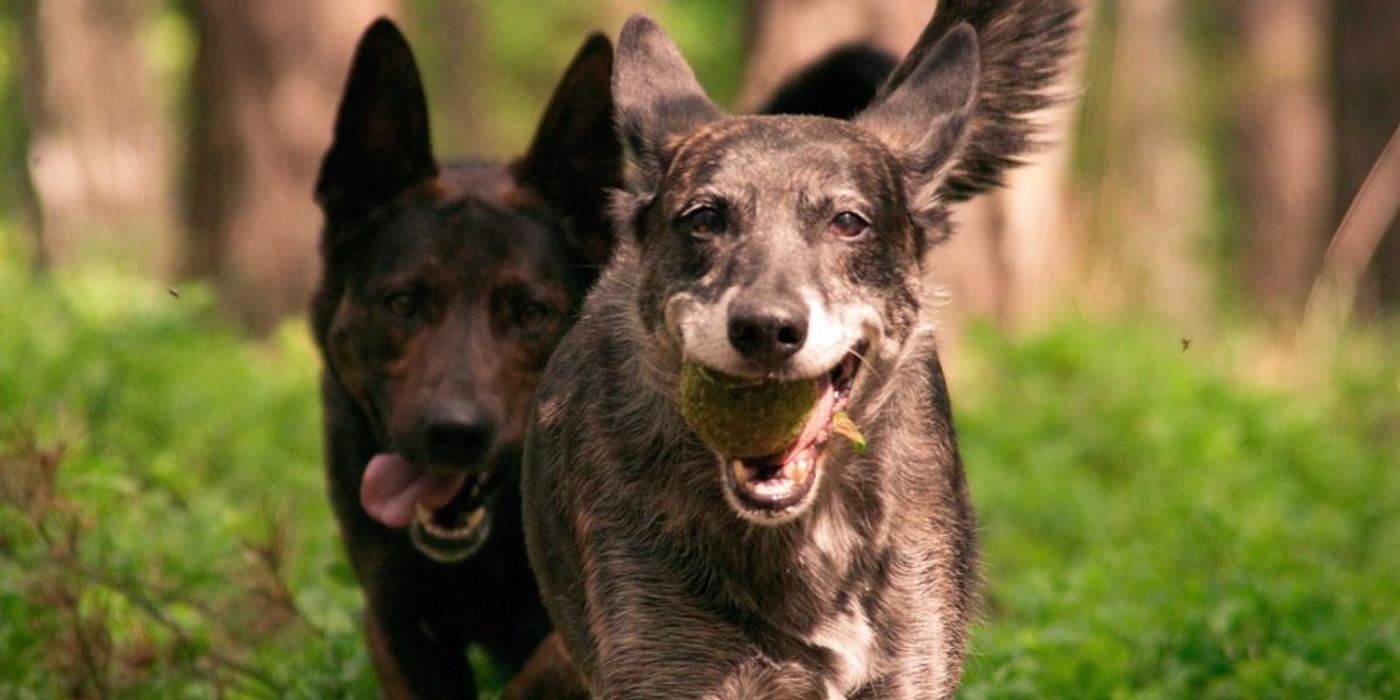How Wolves Evolved into Dogs
Wolves and dogs share 99.9% of their DNA. Technically still the same species, they can also produce healthy offspring. But having said that, there’s no denying the physical difference between wolves and dog breeds such as chihuahuas and dachshunds. So in this case, how did wolves become dogs? What makes this 0.1% genetic difference?
Previous research has suggested that human-dog companionship lies in wolves’ abilities to identify gestures and vocal patterns in our ancestors (Makhijani: 2017). Although there may be some validity in this theory, there is now genetic evidence suggesting that the first wolves who ventured to early settlements were instead selected for their tendency to seek human companionship (Lennon: 2019).
Cooperating with humans was largely beneficial for these early dogs as it allowed them access to warmth, shelter and food. However, unlike in traditional circumstances where these needs would normally be accessed from another species by wolf-like characteristics such as fear and aggression, dogs accessed these by being friendly and cooperative. No longer having a need to be fearful and aggressive to attain these resources meant that other modes of communication were necessary to develop- chiefly in social problem-solving (Nagasawa: 2009).
Being able to socialise effectively with humans was crucial for proper cooperation. Unable to speak a common language, dogs instead developed other capacities to best live alongside them. Among humans, the ability to gaze into each other’s eyes and respond accordingly to the other’s gaze is an important factor of social bonding. Thus, over time, dogs developed their visual cognitive ability to also be able to communicate with humans via a gaze, much how infants are able to communicate with adults via eye contact (Nagasawa: 2009).
Although eye contact is important, studies have shown that humans are able to connect with animals is dependent on an expression of human-like features, even if the object is not human. For example, the fact that humans tend to find paedomorphic, or babyish, physical traits cute has encouraged the flourishing of some physical traits among dogs.
Associated with younger animals and thus perhaps an active instinct to care, beyond the obvious differences in dog breeds, researchers have found that dogs have a different musculatore around their eyes to wolves. This differing muscle structure allow them to pull the “puppy dog” look, as well as have larger eyes, something to help them communicate their intentions to humans (Timmer: 2019).
Such adaptive changes are not exclusive to dogs. A study of spanning 45 years of fox kits selectively bred to approach humans fearlessly and non aggressively showed some similar results. The results found that domesticated foxes were as skilled as domestic dogs in using human communicative gestures to find food. Although the domesticated foxes were no more likely than wild foxes to approach an unknown human or novel object, they tended to approach them more quickly. Taken with the gradual evolution of wolves to dogs, these findings suggest the occurrence of sociocognitive evolution as a by-product of a reduced need for fear and aggression (Hare: 2005).
To conclude, genetic evidence demonstrates that the underlying factor for wolves transitioning into dogs is likely thanks to a higher genetic propensity of some wolves to socialise with humans. Encouraged by domestication, this propensity then caused other aspects of the dog to adapt specifically to being able to maintain their bond with humans, something that eventually led to changes in their genome differentiating them from wolves.
Sources
Makhijani, Pooja: Princeton University
Lennon, Annie: Labroots
Nagasawa, Miho et al. : Japanese Psychological Research
Diep, Francie: Pacific Standard
Timmer, John: ars Technica
Hare, Brian et al.: Current Biology



![WGS for rare disease diagnosis [eBook]](https://d3bkbkx82g74b8.cloudfront.net/eyJidWNrZXQiOiJsYWJyb290cy1pbWFnZXMiLCJrZXkiOiJjb250ZW50X2FydGljbGVfcHJvZmlsZV9pbWFnZV84MmRlM2UyYjA5M2Q3ZTYwOTI3Zjc1YTRjOWU2N2RmMjkzMThjMTJkXzI1MDcucG5nIiwiZWRpdHMiOnsidG9Gb3JtYXQiOiJqcGciLCJyZXNpemUiOnsid2lkdGgiOjcwMCwiaGVpZ2h0IjozNTAsImZpdCI6ImNvdmVyIiwicG9zaXRpb24iOiJjZW50ZXIiLCJiYWNrZ3JvdW5kIjoiI2ZmZiJ9LCJmbGF0dGVuIjp7ImJhY2tncm91bmQiOiIjZmZmIn19fQ==)






